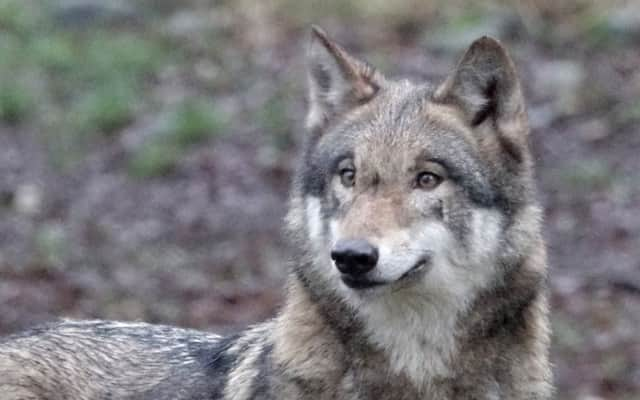How reintroducing wolves to Yorkshire countryside can help tourism: GP Taylor


To many, that might sound outrageous, but to a growing number of people it is a dream they want to come true. Wolves, wild cattle and pigs once roamed freely across Yorkshire. The wolves were hunted to extinction and the cattle and pigs domesticated. Much of the county was stripped of its woodland and the eco system radically changed. As farming became more and more intensive, the land became a giant food factory.
Thankfully, there are a growing number of people who would like to ‘re-wild’ some of the countryside. This doesn’t mean that we’ll all be having wolves in our back gardens, but it does mean that the way the land is managed will change. Returning more of our county back to wilderness might just be the thing to revitalise farming and create jobs with new nature-based economies.
Advertisement
Hide AdAdvertisement
Hide AdI believe this will not only be good for farming, but also for the environment. It was William Pitt who said that the parks were the ‘lungs of London’. How true it is now, as it was back in 1808. We need more trees to soak up our carbon emissions. A two-tonne tree can absorb seven tonnes of carbon dioxide.
As it stands, only 13 per cent of this country has tree cover whereas in Europe it is around 35 per cent. There is an urgent need that Britain doubles or triples its tree cover by 2045 to fight climate breakdown. There is an even greater importance with climate change to plant more trees.
In Nidderdale there is an amazing project to convert land back to its former glory. Trees are being planted, ponds dug and wildlife encouraged to return. Make It Wild is a Yorkshire-based project with an ethos to encourage a greater understanding of nature and improve habitat and biodiversity. Throughout the country many people are doing the same thing. The Knepp Castle Estate in West Sussex is one place where an intensive farm that often ran at a loss was turned into a profit by re-wilding.
Since 2001, the land, once intensively farmed has been devoted to a pioneering re-wilding project. Using grazing animals such as cattle, ponies, pigs and deer as the drivers of habitat creation, and with the restoration of natural water courses, the project has seen extraordinary increases in wildlife.
Advertisement
Hide AdAdvertisement
Hide AdWildlife tourism generates income. In Scotland, the osprey is estimated to bring in £3.5m a year. A pair of ospreys breeding at Wildlife Trust’s Cors Dyfi reserve in Wales draws in around £350,000 a year for local businesses.
Visitors travelling to Finland to see brown bear and wolverine have boosted the economy by €4-5m in 2012 alone. The reintroduction of vultures attracts 80,000 visitors each year to France.
In 1995, wolves were reintroduced into Yellowstone National Park, which transformed the ecology of the area. This allowed forests to regenerate and biodiversity to increase. Wolf-related tourism also brings $35.5m annually to Wyoming. So why not here?
Re-wilding encourages farmers and landowners to diversify and secure different types of income streams to help them survive what could be a doubtful future. It also changes the way the landscape looks. The Yorkshire Moors haven’t always been miles and miles of lifeless heather with very little animal diversity. They were once thriving woodland that provided a home for many different species of animals.
Advertisement
Hide AdAdvertisement
Hide AdOne only has to look at the Carrifran valley in the Scottish Borders to see how an area like our moors can come alive and radically change in appearance.
When the Carrifan Wildlife Group took over the valley in 1999 it was in a poor state from hundreds of years of sheep grazing. The group planted half a million trees in its first decade of work. Now the valley is thriving with wildlife, which is a great draw for tourists.
It would not be too big a step to reintroduce some of the species of animal that once roamed Yorkshire. Beavers, wild boar and red kites have been successfully set free in other parts of the country.
According to the RSPCA, there are over two million deer in the UK. In such numbers, they are a threat to biodiversity. What would be the problem with reintroducing an apex predator like the wolf to take down deer numbers? Wolves play a critical part in revitalising ecosystems that have been over grazed by deer. Yorkshire could be the leader in bringing this much needed mammal back.
GP Taylor is an author and broadcaster from Whitby.